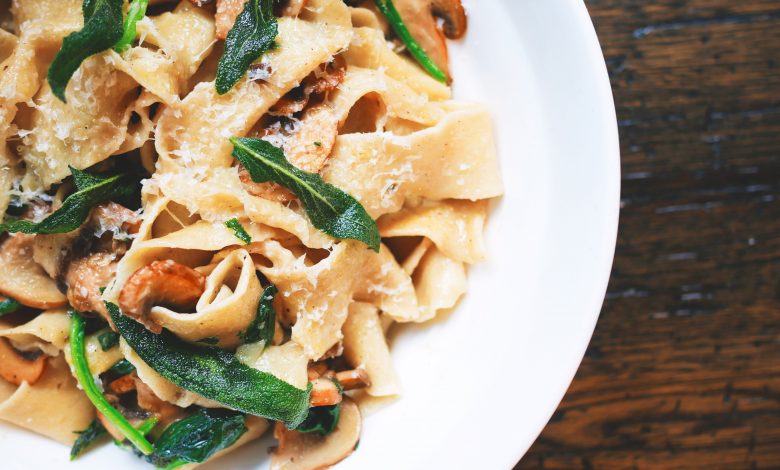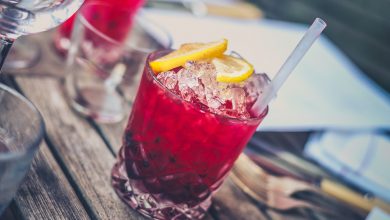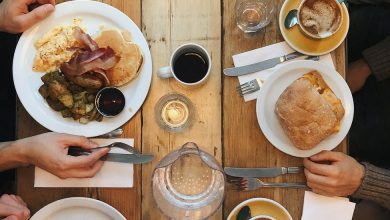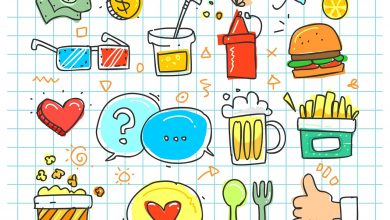
Olive Garden: What To Eat And What To Avoid For Weight Loss
Olive Garden can be a comforting choice reminiscent of a home-cooked Italian dinner. Sadly, it can also be a den of temptation for those trying to lose a few pounds. Choosing to shed weight and live a healthier lifestyle is always a good call, but that doesn’t mean the process is painless, especially when going out to eat or dining with friends. When most of us think of “eating well,” we picture scant portions, boiled chicken breast, and deprivation.
In reality, eating well is about choosing meals with the right ingredients. At the end of the day, weight loss isn’t just about cutting calories; it is about nourishing your body with foods that work with your body rather than against it. In the same vein, healthy life is about knowing which foods to totally avoid. Luckily, making good decisions when it comes to Olive Garden is easier than you think.

What To Eat To Lose Weight At Olive Garden
Let’s make one thing clear: not all calories are created equal. A higher calorie meal with healthful ingredients won’t be detrimental to your waistline, whereas one with empty calories will be. Diverse foods move through disparate metabolic pathways within each of us. Each food can have tremendously different effects on cravings, hormone levels, and calories burned. That’s why it is important to shift your focus from just totals, to how specific foods affect those overall calorie counts.
Salmon Picatta
Calorie wise, the Salmon Piccata at Olive Garden can look a bit rough (570 calories). However, it is a meal chock full of healthy ingredients and a classic distribution of healthy nutrients. This meal provides a whopping 45 grams of protein to satiate, as well as essential omega-3 fatty acids which research suggests boosts overall wellness in heart, brain, and eye health.
Healthy Fish
Salmon itself is a profoundly lean protein and a powerhouse diet food. A single three-ounce serving of salmon supplies about 40 percent of your daily value for protein, with little in the way of fat. Additionally, the fish oil you get from eating salmon can support weight loss and a healthier BMI.
When a study took young, overweight men and studied their eating habits, it found that those who ate fish or regularly took fish oil supplements lost two more pounds over the course of four weeks than those who did not consume fish at all . This International Journal of Obesity study concluded that fish oil and exercise can independently reduce one’s body fat on its own or when used in conjunction with exercising.
Zucchini
Aside from the salmon itself, the Salmon Picatta shines for its outstanding choice of side dish: zucchini. While it might seem like a boring vegetable, zucchini instantly increases your fiber intake and helps you to feel fuller longer. Zucchini is also very low in calories yet very high in water and fiber. This combination makes it a powerhouse at reducing blood sugar levels and increasing insulin sensitivity. It is also a great choice for those wishing to reduce their overall body weight. By including zucchini in your diet, you will feel satisfied longer after your meal has ended. This reduces the need to snack in between meals and can lead to greater strides in weight loss.
Chicken Giardiano
If you’re not much of a salmon eater, Olive Garden offers the Chicken Giardin, a nutritious yet comforting source of protein that will help you feel satisfied while eating a garden variety of vegetables all known for their nutrient content and antioxidant values.
Chicken and Spinach
Aside from chicken, which is an amazing source of lean protein, it also contains spinach. Dark leafy greens like spinach increase your fiber intake, boosting satiety, while giving you a boost of potassium, magnesium, and vitamins B6, B, and E. It also boasts high levels of vitamin C, vitamin K, folic acid, iron, and calcium.
Research suggests that foods rich in calcium can help the body to burn more fat and keep it off for good. While spinach helps to fill you up, it contributes little to your calorie intake. Eating just one cup of spinach in place of sugary drinks or lower-fiber foods can definitely bolster your weight loss efforts.
Broccoli
The Chicken Giordana also contains broccoli, a superfood if ever there was one. Broccoli is rich in calcium, which has been shown to increase fat loss all over the body, but it significantly impacts fat stored in the abdominal area. Interestingly enough, studies suggest that calcium from food is more effective than calcium from supplements, making fiber-rich broccoli a great addition to any meal.
Green Peas
Additionally, you will find green peas in the vegetable-heavy Chicken Giordano. According to research conducted by the Mayo Clinic, peas are chock-full of dietary fiber along with essential vitamins and proteins needed to uphold a healthful diet. Green peas are low in calories, containing just 67 calories per one cup serving. Still, they boast a whopping 5.2 grams of protein, relatively high for a vegetable. Peas are an ideal food to promote weight loss, as they can substitute higher calorie foods or stand on their own as a great source of protein and fiber.
What Not To Eat At Olive Garden For Weight Loss

Tour Of Italy
Though a popular choice for the diner looking to splurge on calories and ditch the routine, it can be quite detrimental to your weight loss goals. High in calories, total fat, saturated fat, sodium, and sugar, by polishing off this dish you’ll be consuming more than 1,000 milligrams over the recommended dietary limits for sodium. This dish also contains more than twice the recommended limit of saturated fat. What makes the tour of Italy such a diet saboteur? Let’s break it down.
Salt
The Tour of Italy is comprised of Fettuccine Alfredo, Classic Lasagna, and Chicken Parmigiana. Each of these dishes is very high in sodium. A diet high in sodium isn’t just detrimental to heart health; it is linked to weight gain and overeating. Research published in the Journal of Nutrition and Chemical Senses concluded that salt can cause us to overeat, often masking the taste of fat and appealing to biochemical mechanisms in the body.
Eating fat causes the body to start processes that will indicate to your brain when you should stop eating. However, salt prohibits this, which often leads to overeating. Over time, your body tolerates fat more easily, which means, to get that same full feeling, you have to eat more and more. Given that the Tour of Italy boasts more than 3,000 mg of sodium, this leads to plenty of overeating and triple the calorie intake.
Processed Meats and Fatty Cheeses
Let’s break down each dish in the Tour of Italy, starting with lasagna. This Italian favorite might seem pretty harmless, but it is a dish that can easily go out of control, especially when processed. Ground chuck, a hallmark of lasagna, is a decent source of protein, but is also extremely high in fat, with 300 calories and 20 grams of fat per serving (without any cheese or noodles). Add in the cheese, and things can really go off the rails. One cup of whole milk ricotta cheese has 429 calories and 32 grams of total fat (20 being saturated). Mozzarella comes in with 15 grams of saturated fat and 25 grams of total fat. Between just the cheese and meat, you’re well above your daily fat limit and sabotaging your weight loss goals.
Breaded Chicken Breast
The Chicken Parmigiana in the dish can seem appealing to novice dieters due to the inclusion of chicken, as it is a great source of protein, niacin iron, zinc, phosphorus, and magnesium. Unfortunately, this is a breaded chicken breast that has likely been deep-fried to maintain crispiness. It can run you around 800 calories. Not only is the breading salty and carb-heavy, but it is full of trans fats. Trans fats can cause you to quickly gain weight while increasing your risk of Type-2 diabetes.
Refined Carbs
Finally, we have fettuccine alfredo. Veggie-less and carbohydrate-heavy, fettuccine alfredo is all refined processed pasta, cream, butter, and cheese. The creamy sauce is very high in saturated fat. Just one serving of Alfredo contains 10 grams of fat. The recommended limit of saturated fat is 15 grams. Fettuccine Alfredo also contains around 88 grams of carbohydrates per serving yet just two grams of fiber. It will fill you up quickly, but won’t leave you feeling satisfied for very long. While carbs alone will not always cause you to gain weight, they can contribute to overeating.



